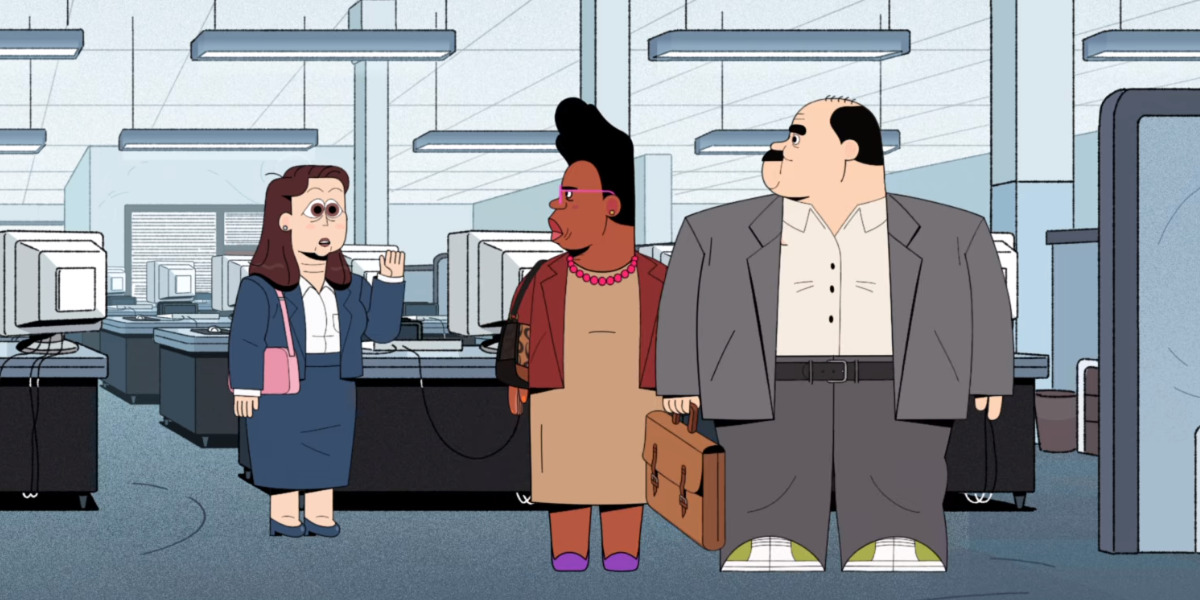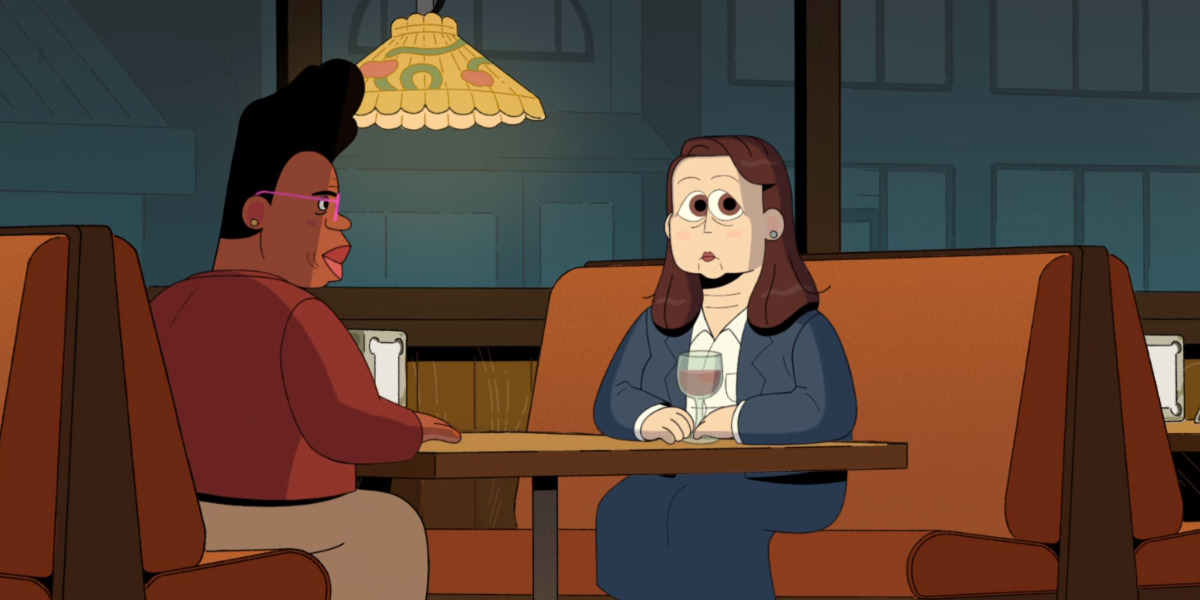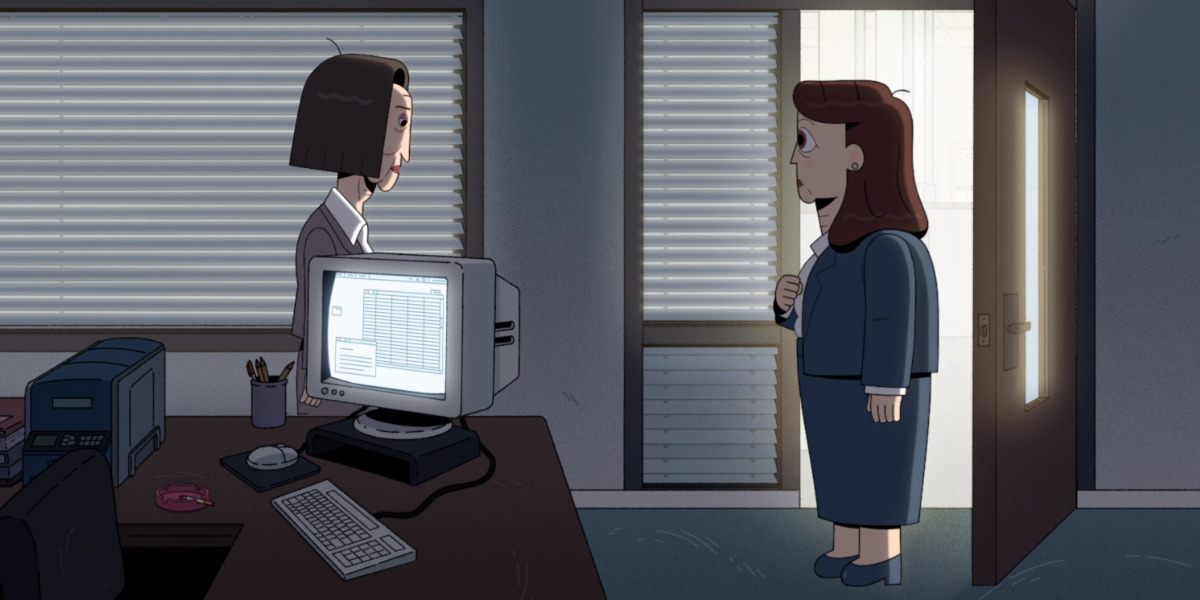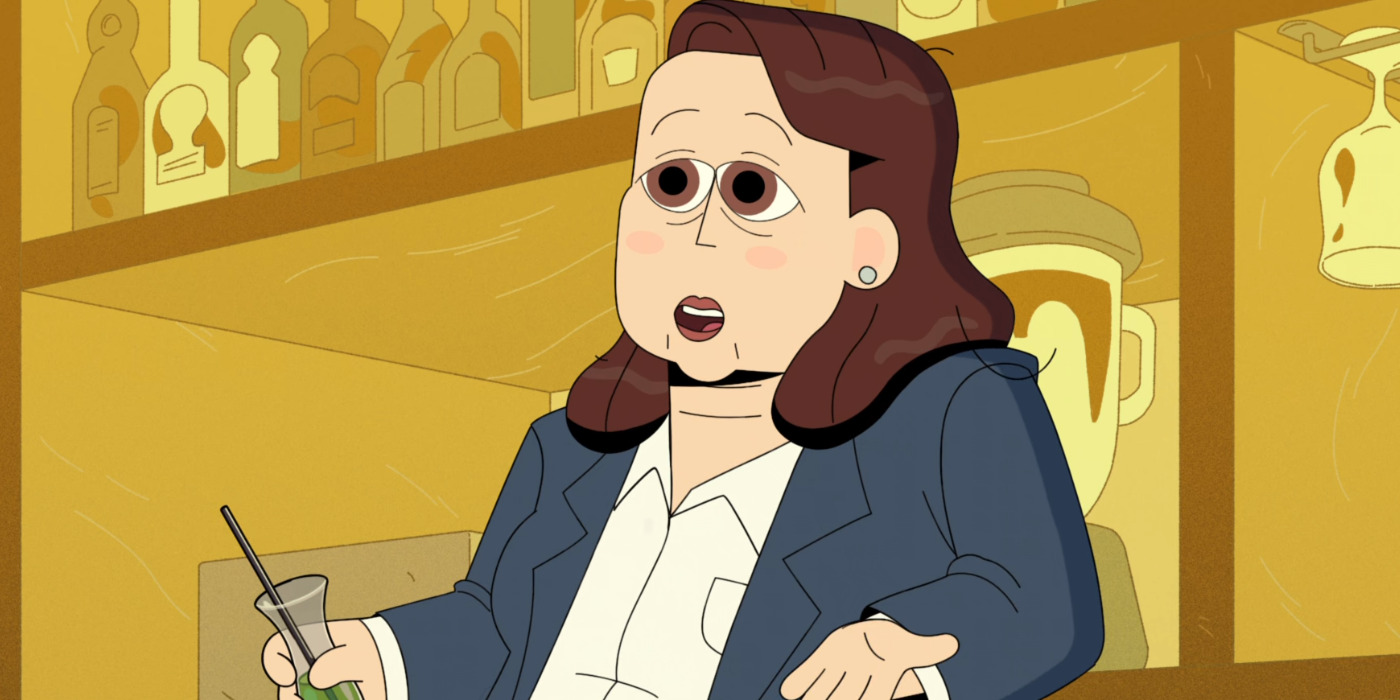Netflix’s adult animated comedy show, ‘Carol and The End of the World’ presents the story of an unlikely protagonist with subdued passions who finds herself undergoing a self-discovery journey in the face of humanity’s impending extinction. After discovering a planet hurling toward the Earth, humanity must make peace with its upcoming doom. In months, the planet will be destroyed, taking every life with it. As a result, much of the population has succumbed to boundless hedonism. Nevertheless, through it all, Carol Kohl, a meek woman nearing middle age, remains lost and unmoored as she seeks the monotony of mundane life.
Even though the nearing apocalypse seemingly seals Carol and every other character’s ultimate fates, the show finds a way to essay a moving narrative about love, life, and friendship in the lead-up to destruction. In doing so, it allows Carol to chart her own path and conclude her story in a way that surpasses oblivion and its nihilism. SPOILERS AHEAD!
Carol and The End of The World Recap
Keppler 9C’s discovery brought a dark time for humanity, compelling them to face their mortality by putting a countdown over it. Thus, seven months from the end, all Carol can find on television channels and radio stations are stories about the same. While some people had taken to a mass panic, many had embraced the deadline and thrown themselves into achieving everything they had ever wanted.

Carol’s own family, parents Bernard and Pauline, and sister, Elena, fall into the latter. While Elena travels the world, sending videotapes of one adventure after the other, Carol’s parents become nudists and live as a throuple with Michael, Bernard’s young male nurse. The woman’s parents remain perpetually concerned about their daughter, who is unwilling to subscribe to a carpe diem lifestyle. Instead, Carol prefers to define her life with the routine of grocery shopping and paying bills— social concepts that no longer exist.
As such, to blend in, Carol attempts to attend a rave party, only to leave early after getting overwhelmed. Still, she finds an introverted soul like herself, Eric, and ends up hooking up with the man. Although the two connect, it comes crashing down when Eric confesses his premature love for Carol on their second date. Realizing she is better off in her shell, Carol faces another change.
Carol’s parents and Michael are leaving for a grand cruise now that the former no longer have to worry about their daughter’s well-being due to her new social life. Thus, Carol simply falls back to her old habits of attempting to hold on to some sense of normalcy. Nevertheless, things change when a twist of fate brings her to Distraction, a company with an accounting floor filled with people working a regular nine-to-five. The same presents a bizarre image within a world prepared for the apocalypse, with abandoned chain restaurants and businesses.
Yet, Carol fits in like a glove with her desperate need for routine. Likewise, the company seamlessly welcomes her, assigning her a desk and trivial tasks of copying, computing, and filing. Even though Carol has no idea what purpose such services serve in the current world, she happily takes the job and falls back into a blissful regimen. As such, she lives weeks of her life working at a cubicle surrounded by numerous others like her, who crave this work to bring semblance back into their lives.
In many ways, Carol is the model employee, the first person through the door, and often the last one out. In fact, she comes out on top even when the company seemingly tests her loyalty by sending her on a bounty hunt around town for a printer toner. After proving her worth, however unwillingly, Carol gets appointed as a full-time administrative assistant. Still, she doesn’t know anything about the nature of her job. Furthermore, after tentatively befriending a co-worker, Donna, Carol learns that other employees are just as oblivious as her.
Nonetheless, over all-nighters and a particularly wild adventure involving a dead coworker and his funeral, Carol, Donna, and Luis, another colleague, become close friends. Eventually, through Carol’s efforts and her growing friendship with Donna and Luis, the rest of the office also begins to come around. As such, the workplace transforms from a robotic mechanical cog to a community where the employees know each other’s names and stories.
However, one random afternoon, three months away from Keppler 9C’s and Earth’s calculated day of impact, the Accounting division at Distraction oversees a strange scene. After an outburst, the entire office dissolves into tears, showcasing a compulsive, hysterical wave. Worse yet, the HR assigned to investigate the root of the problem traces it back to Carol and her regular after-work Applebee’s hangout sessions.
Carol and The End of the World Ending: How Did Applebee’s Bring Change In Distraction?
The narrative gives little to no details about Distraction and its purpose. The same remains an intentional choice that also carries forward to the textual universe, where none of the employees know what exactly they are working toward. The company simply runs in cyclic motions of piling paperwork, offering its workers a monotonous routine to follow. Distraction doesn’t seek out recruitment and has a virtually non-existent hiring process. If life brings you to the office’s doorsteps and you choose to stay, you have a place in the endless array of cubicles.

Ultimately, the same is Distraction’s entire purpose. As the company’s name implies, the work offered in the building is simply a distraction from the upcoming doomsday. While others, like Carol’s family, can find peace by taking on adventures and submitting themselves to the pleasures of life, many people can’t do so. People like Carol, Donna, and Luis require structure in life— a purpose to work toward. After years of capitalistic society and its conditioning, these people find that purpose in a nine-to-five job.
Even Luis, who lived to travel before the apocalypse, finds comfort in Distraction’s monotony. More than that, he finds a distraction within it. The company feeds on this same necessity of its employees by demanding complete dedication from them to provide them with undivided distraction from the world’s end. However, Carol and her caring persona threaten this mission.
Unlike the other employees, Carol begins to care about her surroundings, so much so that she goes through Distraction’s personnel file and makes an effort to learn everyone’s names. Furthermore, she began using them around the office. By doing so, she gives each employee a sense of individuality that they have been sorely lacking since their employment. Similarly, her tendency to gather knick-knacks on her desk spreads across the office, encouraging others to showcase their personhood.
Although the same isn’t necessarily bad, it leads to conversations and connections between the workers. Before Carol, everyone could focus on their tasks while ignoring their desk neighbors. However, now they have started to form bonds. Carol’s impromptu call for a wake to celebrate the life and death of their co-worker, David Douglas Sever, marks the first instance of a group activity. Even though the man was a virtual stranger to people he spent his waking days with for months, Carol’s efforts helped others recognize him as a comrade.
Therefore, this same effect only exponentiated when Carol and her friends decided to renovate their local Applebee’s. Carol has had an intimate relationship with the chain restaurant throughout the show. Before Carol found Distraction, she often drove to an abandoned branch and spent time there. Therefore, now that Carol, Donna, and Luis need a place to hang out after work, the woman realizes it can be the perfect spot.
As a result, the trio begins visiting the restaurant and patching it up bit by bit. Likewise, other co-workers overhear their plans and decide to tag along, which leads to a regular ritual. Within the Applebee’s, Carol and her colleagues find a haven, an actual purpose to live instead of just a distraction from their bleak situation. It allows the workers to form bonds and relationships, defining their lives by human connection rather than work.
As the meetups gain traction, the company’s management begins to grow weary, sensing a change in the air. For Distraction, their employees need to be a well-oiled machine. Anything that derails them from their job can pose a danger to the fragile sense of safety and normalcy that the company provides to its employees. If they indulge in too much human connection, then work will also become a constant reminder of everything they will lose once Keppler 9C hits the Earth.
Therefore, the HR manager slips into the crowd to investigate the recent social developments among her employees. Nevertheless, she ends up getting caught up in the lively nature of Applebee’s hangouts. As a result, while she works on her report for the management, explaining how Carol’s interference has led to the recent emotional wave across the office, she falls victim to it as well.
The trigger comes when Carol calls the HR by her name, Kathleen, hammering a crack in the latter’s built-up walls. As such, when one employee accidentally catches a glimpse of the woman crying in her office, it sets off a chain reaction across the office. The world is ending, and while denial is a comfortable place to live in, even the Distraction employees can run from it for so long.
Does the World End?
Since the show’s premise revolves around an upcoming apocalypse, and the narrative heavily deals with people’s reactions to it, with a focus on denial, the question of the inevitable doom naturally hangs in the air. However, the show isn’t actually about an apocalypse. From the beginning, the narrative follows Carol and her life. The news of the world’s end simply triggers the woman’s transformative journey of self-discovery. Yet, it doesn’t define the same.

As such, while the world likely ends a few months after Carol changes everything at Distraction, the narrative only follows the protagonist until then. However, instead of running from the knowledge of that world’s ending, as several characters try to do in the start, by the end, Carol’s influence helps them embrace the same.
Therefore, Kathleen’s breakdown and the subsequent emotional burst throughout the office marks the perfect conclusion to the story. Even in the face of tragedy, it’s helpless to run from human connections. Love, friendship, and camaraderie are the things that make life worth living. Carol and her co-workers, who spend the entire show aptly in “Distraction,” ultimately learn the same lesson.
Read More: Best Adult Animated TV Series on Netflix Right Now


You must be logged in to post a comment.